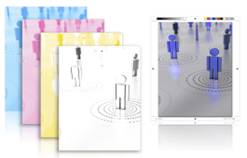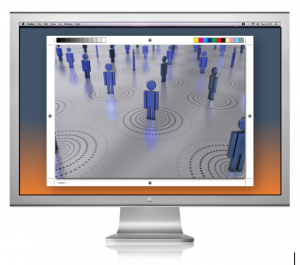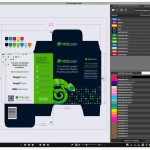The History of Color Proofing
In the early days, the color separation process was never exact, and the resulting print could be corrected by altering the four halftone images with a process called dot etching. Etchers would alter the dot size by over-exposing a duplicate (dry etching) or using a chemical to “etch” the shoulder of the dot (wet etching). Proofs of the etching results were made to allow both the etcher and the client to approve color before the expense of a press run.
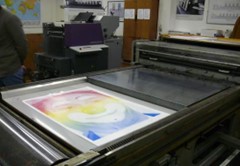
The early days of the ‘prog.’
Up to and including the early 1970s
Before off-press proofing, all proofs were done on a press—either the actual press or a hand-fed offset proofing press. These proofs are generally delivered as a progressive, or “prog.” A prog was a bundle of sheets stapled together that contained a sheet of each color, a sheet for each 2-color combination, such as cyan plus magenta and yellow plus black, with the 4-color (full-color) top sheet.
The prog was helpful because many presses at that time were 1- or 2-color only, and the sheets had to be fed through multiple times to print the full color. Each pass used its one color from the prog. These proofs were very good quality but extremely costly to produce and very slow to create, driving the cost of color printing way up. This is why old magazines tend to have color only on covers and perhaps a few inside pages.
Did the press proofs match? In other words, were they effective in providing proof of the final printed product?
For the most part, the answer is yes, because they were created with the actual film plates and ink used to print the final run. However, there were still some small issues with matching—especially for discerning clients—and the printer could be heard saying things like: “That’s just the proof. It will be sharper when run at production speeds.” Or, “We can have the pressman push the color during the run to brighten it up.”
The late 20th century brings dye-based proofing.
From the late 1970s into the 80s.
In the late 70s and 80s, color could be proofed without the expense of making plates and running a press. The process used photo-sensitive color CMYK dye layers that closely matched the CMYK inks used on the press. This process used the same film negatives that made the printing plates to expose each light-sensitive dye layer on a clear substrate. The cyan, magenta, yellow, and black were made one at a time like the plates and developed by hand in a sink or, later, in a processor. The individual layers were registered and taped to a piece of paper to produce a full-color proof.
Did they match?
Well…not very well. You could slip a sheet under any layer to create a prog if needed, but the four-layer proof was far from the reality of trapped ink on a printed sheet. However, they were much less costly and much faster to create than making plates and running a press, and etchers in pre-press could use them for making judgments. An early use was mainly in a pre-press house to cut back on the iterations of press proofs required to get a client’s approval.
Within the decade, a second generation of dye-based proofs was developed. The CMYK layers were laminated after each was developed, creating a color image on a white substrate. The new process resulted in a proof much closer to a prog or the printed sheet.
Did they match?
They were of much better quality than the multi-layer proof but less accurate than a press proof. Since many clients were still getting progs, they resisted these proofs, often commenting, “It’s not ink.” However, they were faster to make than on-press proofs and far less expensive to produce. Manufacturers’ improvements and the speed of creating them eventually made this solution the industry standard and a replacement for press proofs. Today few people remember ever seeing a prog or using a press proof.
However, some discerning clients still had matching issues. Phrases like, “That’s just the proof. It will print cleaner and brighter,” were often used to sell the color.
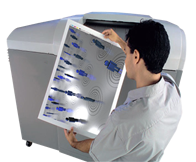 Into the future with CMYK digital proofing.
Into the future with CMYK digital proofing.
During the 1990s
With the introduction of desktop publishing and CTP (computer to plate), proofing adapted. CMYK color separations were done on the computer, and film was eliminated from pre-press. Desktop scanners were replacing expensive film-based scanners, and color use became mainstream. Single and 2-color presses were phased out as more and more 4-color presses were sold. Etchers moved their skill set to retouching software such as Photoshop, and the proofing system manufacturers created CMYK dyes that could be exposed to light controlled by a raster image processor, or RIP. These machines created the one-piece laminated proof similar to their film-based predecessors.
But…did they match?
Since these first digital proof printers were made by the same manufacturers that made the laminate film-based systems, the answer is yes—they closely matched. The same RIP technology used to drive the CTP produced the halftone dots on these early digital printers. In fact most manufacturers kept the same name and just called it digital (Digital Matchprint). Keeping the dots and the name made this the easiest transition in proofing yet.
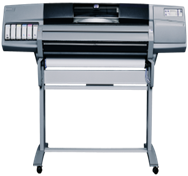 Color-managed inkjet leads the way.
Color-managed inkjet leads the way.
At the turn of the century
Around the turn of the century, technological evolutions made color control more mainstream. Color management systems could profile scanners and inkjet printers. Software that used these profiles could print an inkjet proof for far less cost than those printed on proprietary printers.
Did they match?
Using appropriate color management and driver software, a well-maintained inkjet device produced the best color proof since the press proof. However, the resistance to change was still there. Where are the dots?, was often used to resist these proofs. It took time to understand that the proof did not require the screening of the printing plate to show accurate color reproduction. Once again, the new generation of proofs were even faster and cheaper to produce than proprietary digital devices.
The issue was, “Whose print criteria (profiles) are we using?” Producing such proofs relies on the individual devices being correctly and regularly calibrated. These proofs lack durability, and (as with all the proofing methods we have seen so far) the proof needs to be physically delivered to the project participants—who may or may not be using proper lighting when viewing the proof.
Digital color-proofing is the perfect answer for today’s environment.
From the 2000s to today
When discussing digital color proofing, we are not talking about “soft proofing.” A soft proof is no more accurate than the first-generation multi-layer dye proofs. Any file opened on one application will look different when opened in another application. This is why inkjet proofs are still used today.
A digital color-accurate proof requires a calibrated display and proper use of profiles to be viewed precisely and accurately, just like an inkjet proof. However, sharing a digital color proof requires sharing all that information with the client, who—rightly so—wants “proof” of the printed product to come. To deliver and share a digital color proof, you must manage the status of all monitors and coordinate all color settings with all viewers.
Will they match?
Yes, if you use the best tool available, and ICScolor offers that unique product.
Our team of color experts has come from the printing industry and experienced this evolution of proofing technology changes. We designed Remote Director to be a digital color-proofing solution that will overcome and outperform any hard-copy proof – all cheaper, faster, and more sustainable.
With Remote Director, your team of experts can:
- Check the status and calibrate all viewers’ displays to pass ISO certification
- Correctly share and verify all the color settings used in proofing
- Correctly proof spot colors, including blended spot colors
- Accurately proof Extended Color Gamut (ECG) files
- Dynamically change paper color to show how a print product will look on any substrate
- Cut days or weeks out of the proofing process.
- Save thousands of dollars over time in printing and shipping fees.
With Remote Director’s color-accurate digital proofing, the best way to review your color proofs is available today.


